10 Southern Ocean Facts You Might Not Know
Lying in the southern hemisphere and covering the entire South Pole, the Southern Ocean is a large water body holding about 15% of the earth’s waters. It lies on the southernmost part of the earth and is surrounded by Antarctica, which is why it is also called the Antarctic Ocean.
However, its existence and boundaries have been a matter of debate, with some countries like the US recognising it as the fifth ocean after the Indian, Pacific, Atlantic and Arctic, while others discard it as a mere continuation or extension of the other four oceans’ waters.
Nonetheless, the International Hydrographic Organisation has defined it as the ocean located south of 60 degrees south latitude, with Antarctic Convergence as a natural border or boundary.
In this article, let us explore some interesting facts about the Southern Ocean.
1. Southern Ocean is the fourth-largest ocean in the world.
The Southern Ocean spans 20,327,000 square kilometres or 7,848,000 square miles and is regarded as the fourth biggest ocean in the world. It is smaller than the Pacific, Indian and Atlantic oceans but bigger than the Arctic Ocean.
It covers about six per cent of the earth’s surface area, whereas 71% of the earth’s surface is covered with water. The Southern Ocean has a maximum length of 21,000 kilometres and a maximum width of 2600 km. The average depth of its waters is around 4000 m, while its maximum depth is 7000 metres.
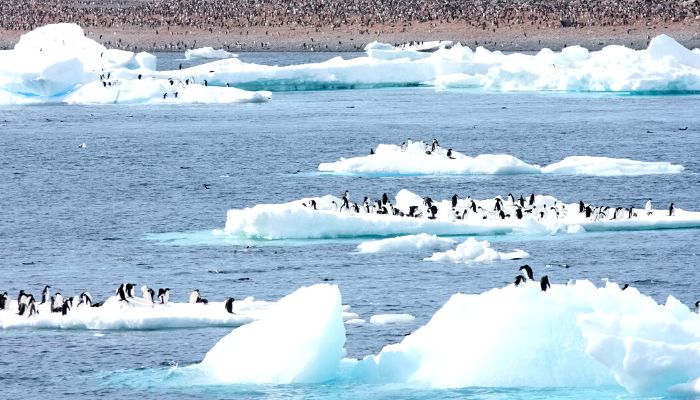
Per some scientists and researchers, the Southern Ocean is drifting by some inches annually. It is due to the expansion of the sea floor, possibly due to plate tectonics; however, this is just a theory that has not been completely proved.
The Southern Ocean is approximately 11,000 feet deep. At its deepest point, though, way down in the South Sandwich Trench, the Southern Ocean is 23,000 feet deep. That’s over four miles below the surface level!
2. The deepest point of the Southern Ocean is the Factorian Deep
The new deepest point of the Southern Ocean was recorded and mapped by the Five Deeps Expedition in February 2019. Using the latest sonar technology, the leader of the expedition and the pilot of the submersible called DSV Limiting Factor, after which the point is named, reached the Factorian deep, which lies 24,000 ft or 7437 m below the surface of the sea.
The team leader Victor Vescovo reached the bottom of the seabed in the manned submersible for the first time on 3rd February 2019.
Vescovo is an American entrepreneur and an explorer who wished to survey and map the deepest point of the oceans of the earth. His endeavour led to the discovery of the Factorian deep, which is as deep as 17 Empire State buildings kept on top of each other.
Vescovo controlled the submersible and directed it to the depths of the South Sandwich Tench, an underwater canyon which stretches for 965 km or 600 miles on the seabed.
3. Youngest Ocean, formed 30 million years ago
The Southern or Antarctic Ocean formed about 30 million years ago, making it the youngest ocean. While this may seem a long time period, comparing it with the age of the Atlantic Ocean, which is 180 million years ago, may put this fact in perspective.
The Southern Ocean emerged when the landmasses of South America and Antarctica moved away from each other and opened up the Drake Passage. Their separation also led to the creation of the Antarctic Circumpolar Current.
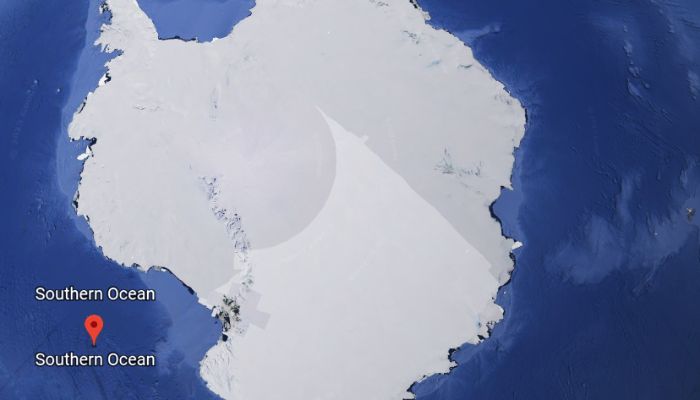
This current makes the Southern Ocean different from the other four oceans as it rotates the waters and transports them across the parts of the Southern Ocean, leading to the formation of a diverse marine ecosystem.
The Drake Passage; is a waterway that connects the Pacific to the Atlantic. It stretches from the southernmost tip of South America, the Cape Horn, to the South Shetland Islands in Antarctica while serving as the shortest maritime route to icy cold Antarctica.
It is 620 miles broad and has an average depth of 11,150 ft. However, the ocean bed reached 15,700 ft close to its south and north boundaries.
4. Witness extreme climatic conditions due to its geographical location
The Antarctic Ocean is near the South Pole, which experiences an extremely cold climate. It is also prone to climate change impacts, affecting the weather across many places and time zones.
The climate also depends on the season and month. Here, summers start from October and last till February, while winters begin from March to September. It is covered with ice in winter months, and so when it melts with the onset of warm months, the salinity and temperature of the waters vary greatly. Places with subfreezing temperatures cool the air, which then goes to the equator leading to the formation of storms and heavy rains.
During summers, the temperature is above the freezing point and can go as high as 10 degrees Celsius. Many species live in the waters that have adapted themselves to these conditions.
The Southern Ocean is one of the coldest oceans in the world, while the Indian Ocean is the warmest as it does not connect with the Arctic Ocean.
However, the icy cold weather does not stop tourists from visiting the Southern Ocean. Many tours and travel expeditions visit the region every year, bringing at least 50,000 people.
5. Site of massive floating icebergs
Due to its closeness with the South Pole, the Southern Ocean has freezing temperatures that lead to the formation of massive icebergs that float in its waters, with a few being hundreds of feet lengthwise.
Per researchers, these icebergs are reserves of freshwater which could provide the world population with enough water for many months. However, they also make navigation in this ocean difficult, challenging and dangerous, as ships might hit these gigantic blocks of ice and sink.
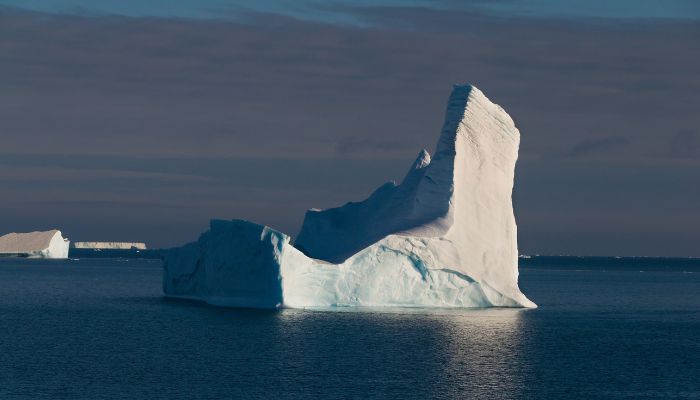
Icebergs are common in every season; however, there are strong winds from May to October, which makes this ocean even more perilous for cargo ships and sailors. Big icebergs drift in the waters and threaten ships. Even in summer, icebreakers are needed to help ships traverse these waters.
6. The largest invertebrate on earth, the colossal squid, lives here
The Southern Ocean is home to the largest mammals on the planet. It also has one of the most diverse marine ecosystems in the world. The majestic blue whale is a prominent resident and feeds on the abundant Antarctic krill, its favourite food.
Secondly, the biggest invertebrate, the colossal squid, dwells in the depths of the Southern Ocean. This giant squid feeds on Patagonian toothfish and can be as long as 45 ft! It also has big round eyes which can grow up to ten inches in diameter.
Apart from blue whales, the Southern Ocean also has many orcas and different species of seals, including the Antarctic fur seals, which are common, followed by Weddell, leopard seals and also heavy elephant seals.
Fish such as cod icefish and snailfish are also found in the Antarctic Ocean. Many penguins also live on floating icebergs, such as Emperor penguins, Rockhoppers and King Penguins. Birds like the Antarctic resident, terns, gulls, albatross and gulls can be seen flying here. All these creatures have adapted to the living conditions of the Antarctic, which enables them to not just survive but thrive in the waters of the Southern Ocean.
7. The Southern Ocean has many different channels, gulfs, seas and strategic passages
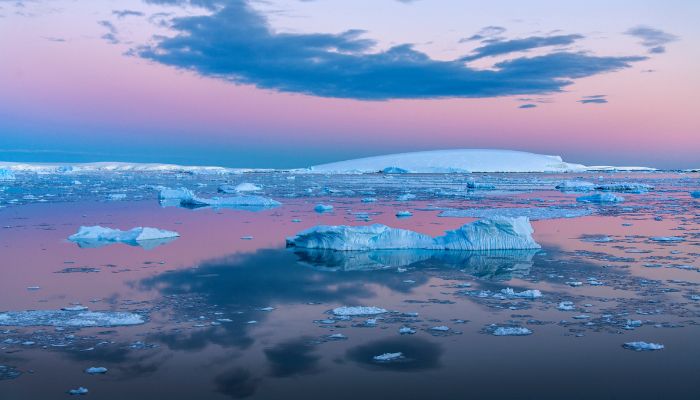
Many prominent waterways, seas, narrow and broad gulfs and bays are found in the Southern Ocean. Some of these are the Tryoshinikova Gulf, Weddell Sea, the Ross Sea, Lazarev Sea, Bransfield Strait, Cosmonauts and Mawson Sea, Drake Passage, Amundsen sea, Lazarev Sea, Bellingshausen Sea and so on.
8. Many Ports and Research Stations are Situated on the Coasts
Although the Southern Ocean is situated in a remote area of the earth, it is still an important maritime route for vessels and research ships travelling to Antarctic ports and harbours.
The southernmost facility is the McMurdo Station, an American research base. It was constructed on the land claimed by New Zealand. It is accessible only during summer.
Many ports are found on the coasts, such as the Palmer Station, Villa Las Estrellas, Esperanza Base, Mawson and the Rothera station.
They are mainly used for transporting essential goods to communities living in the extremely cold conditions of the Antarctic. The majority of ports are controlled by the research stations of the government and are not open for commercial ships or private ships.
In some areas, there are no ports due to thick ice formation, while others are non-operational in peak winter conditions.
9. A repository of minerals, natural gas and oil
The floor of the Southern Ocean has not been completely mapped and explored, yet researchers believe that beneath the depths of the ocean are rich deposits of natural gas and oil, especially along the margins of the continental shelves.
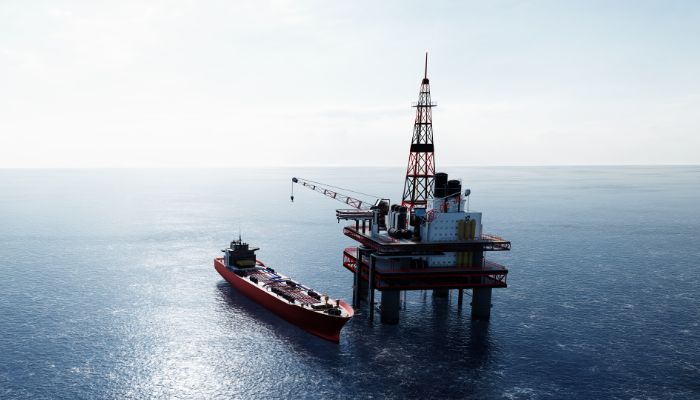
Minerals like gold deposits and the nodules of manganese are also thought to be present in abundance, formed as a result of sedimentary and other geological processes.
These commercially lucrative deposits have attracted the attention of several mining companies who wish to explore the depths of the Southern Ocean in the future.
10. First explored by Bartolomeo Diaz in 1487
The continent of Antarctica was discovered only in the 19th Century and explored in subsequent expeditions mainly led by America and Russia. Sir Ernest Shackleton’s expedition was the first attempt to travel to Antarctica, but it could reach only 88 degrees of South latitude. The first person to sail through the waters of Antarctica was David Henry Lewis. He undertook the journey in 1972.
The cold waters of the Southern Ocean were first recognised in 1487 by Portuguese Explorer Bartolomeo Diaz, who travelled through the Cape of Good Hope, South Africa.
Later, another famous navigator called Ferdinand Magellan, after whom the Magellan Strait is named and the one who explored the Tierra Del Fuego, South America, also came in contact with the waters of the southern ocean in 1520.
Another famous adventurer James Cook undertook a voyage to find land in the Southern Ocean but instead reached Botany Bay, Australia. In 1773, he travelled through the Antarctic circle and went as far as 71 degrees South latitude.
You might also like to read-
- 11 Threats to Marine Environment You Must Know
- 10 Kara Sea Facts You Must Know
- 10 Famous Coral Reefs In The World
- 6 Causes Of Sewage Pollution In The Ocean
- 10 Marine Biome Facts You Must Know
Disclaimer :
The information contained in this website is for general information purposes only. While we endeavour to keep the information up to date and correct, we make no representations or warranties of any kind, express or implied, about the completeness, accuracy, reliability, suitability or availability with respect to the website or the information, products, services, or related graphics contained on the website for any purpose. Any reliance you place on such information is therefore strictly at your own risk.
In no event will we be liable for any loss or damage including without limitation, indirect or consequential loss or damage, or any loss or damage whatsoever arising from loss of data or profits arising out of, or in connection with, the use of this website.
Disclaimer :
The information contained in this website is for general information purposes only. While we endeavour to keep the information up to date and correct, we make no representations or warranties of any kind, express or implied, about the completeness, accuracy, reliability, suitability or availability with respect to the website or the information, products, services, or related graphics contained on the website for any purpose. Any reliance you place on such information is therefore strictly at your own risk.
Do you have info to share with us ? Suggest a correction

About Author
Zahra is an alumna of Miranda House, University of Delhi. She is an avid writer, possessing immaculate research and editing skills. Author of several academic papers, she has also worked as a freelance writer, producing many technical, creative and marketing pieces. A true aesthete at heart, she loves books a little more than anything else.
Latest Maritime Knowledge Articles You Would Like:
Subscribe To Our Newsletters
By subscribing, you agree to our Privacy Policy and may receive occasional deal communications; you can unsubscribe anytime.















